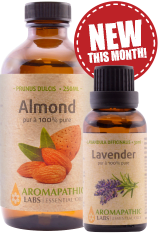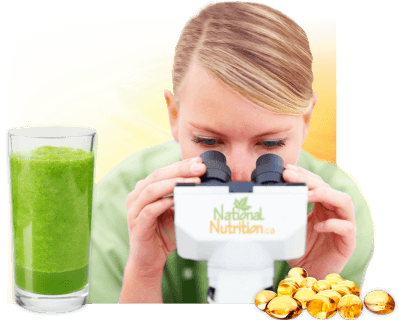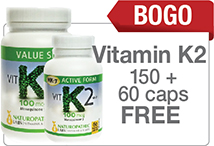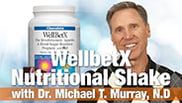Food Additives: What Are They & Which Ones To Avoid
Updated Apr. 26th, 2024 | Read Time: 4 Minutes | What You Will Learn:
- What Are Food Additives?
- Understanding How Food Additives Prolong Shelf Life
- Key Food Additives Used In Canada & Their Uses
- Top Controversies About Food Additives
- Regulations & Potential Reactions To Look For
- Potential Reactions To Food Additives
- Top Additives To Avoid
Food additives have been used for thousands of years. For instance, in India, spices in curry seasonings were initially created to preserve the freshness of food and to conceal the taste of slightly spoiled foods. In the last 50 years, we have seen a significant increase in the number of food additives used and there are now over 14, 000 man-made preservatives and additives being added to our food in North America.
What Are Food Additives?
These substances are added to food to preserve flavour and enhance the taste of a product. Any substance or chemical added to a food to maintain its nutritive quality, to prolong its shelf life, to make it more attractive or to ease its processing, packaging or storage are all considered food additives. They can be classified as dyes or colouring agents, antioxidants, emulsifiers or stabilizers, flavouring or taste enhancers and preservatives.
Understanding How Food Additives Prolong Shelf Life
They work to both preserve food so it has a longer shelf life before it goes bad and work to enhance the flavour and appearance of the food. Some food additives have been around for centuries, such as vinegar used in pickling, salt used to preserve meats and sugar to enhance flavour. Now food additives are used for more than just preserving. Colourants can be used to enhance the appearance of foods; anti-caking agents can be used to keep powders flowing and sweeteners make foods sweeter without adding calories.
Key Food Additives Used In Canada & Their Uses
There are over 850 additives that are approved for use in Canada, here is a list of some common food additives and what they are used for:
Nutritional Information
| food additive | foods that may contain the additive | examples |
|---|---|---|
| anti-caking agents: allow powders torun freely | salt, icing sugar and dried coffee crystals | microcrystalline cellulose, silicon dioxide, tricalcium phosphate |
| colouring agents: give foods a pleasing colour | candy, pop, energy drinks, instant puddings, jello and cake mixes | citrus red no. 2, caramel, tartrazine |
| emulsifiers: stop liquids from separating | salad dressings, sauces and margarines | lecithin, mono- and diglycerides, polysorbate |
| gelling and thickening agents: thicken foods to give texture and body | instant puddings, yogurts, salad dressings, sauces and ice cream, nut milks | carageenan, cellulose, guar gum and xanthan gum |
| sweeteners: sweeten food without adding calories | diet pop and vitamin waters, fat-reduced ice cream, yogurt and sugar-free candies | acesulfame-potassium, aspartame, mannitol, sorbitol and xylitol |
Top Controversies About Food Additives
There is a great deal of controversy about food additives and whether or not they cause adverse symptoms like allergies, hyperactivity in children, ADHD, neurological symptoms and symptoms of toxicity. While sensitivities to MSG (monosodium glutamate) have been identified, other intolerances to other food additives have not been recognized by the medical community.
One could consider the profits made from great-tasting foods with long shelf lives and understand that the controversy stems from how we obtain our food and from those who stand to profit from the manipulation of our food supply. However, many health-conscious individuals are creating a new demand for foods with little to no food additives and many companies are stepping up to supply this demand.
Regulations & Potential Reactions To Look For
In Canada, food additives have to be approved by Health Canada before they are used. The manufacturer of the food additive has to file a submission and provide Health Canada with detailed information about the food additive, its proposed use, the results of safety tests and information on the effectiveness of the additive for its intended use. The same process occurs in the United States with the Food and Drug Administration.
However, one could argue that the information provided by the manufacturer would be biased and that a different regulatory structure would better protect the public from the interests of the manufacturer. Unfortunately, this would require a much larger monetary investment from the government, which is not likely to happen. This means it is up to the consumer to decide what they consider safe for themselves and to avoid food additives they have concerns about or that they react to.
Potential Reactions To Food Additives
Reactions typically occur after eating the offending food and the most common symptoms include abdominal pain, vomiting, diarrhea, headaches, facial flushing, weakness, breathing problems and changes in heart rate.
Top Additives To Avoid
- Aspartame – This artificial sweetener has been linked to numerous health concerns and has been identified as a neurotoxin and carcinogen. It can have negative effects on short-term memory and it's been linked to infertility, migraines, seizures, mental confusion and diseases like multiple sclerosis, fibromyalgia, Parkinson's and Alzheimer's disease. It's also been linked to weight gain, despite the fact it contains no calories.
- MSG (Monosodium Glutamate) – MSG is used to enhance flavours and is a known excitoxin that damages cells. It also affects the neurological pathways in the brain and interferes with our ability to know when our stomach is full, which encourages weight gain. It has known side effects of headaches, fatigue, disorientation and depression.
- Common Food Dyes – Studies have shown that artificial food colourings can contribute to behavioural problems in children and may lead to a significant reduction in IQ.
- High Fructose Corn Syrup - This is found in sodas, processed foods, candies, yogurts and cereals to name only a few. This is a highly concentrated sugar made from corn and it is known to cause weight gain, increase triglycerides and cause a fatty liver. Be sure to read your food labels carefully and avoid high fructose corn syrup – your waistline will appreciate it.






















